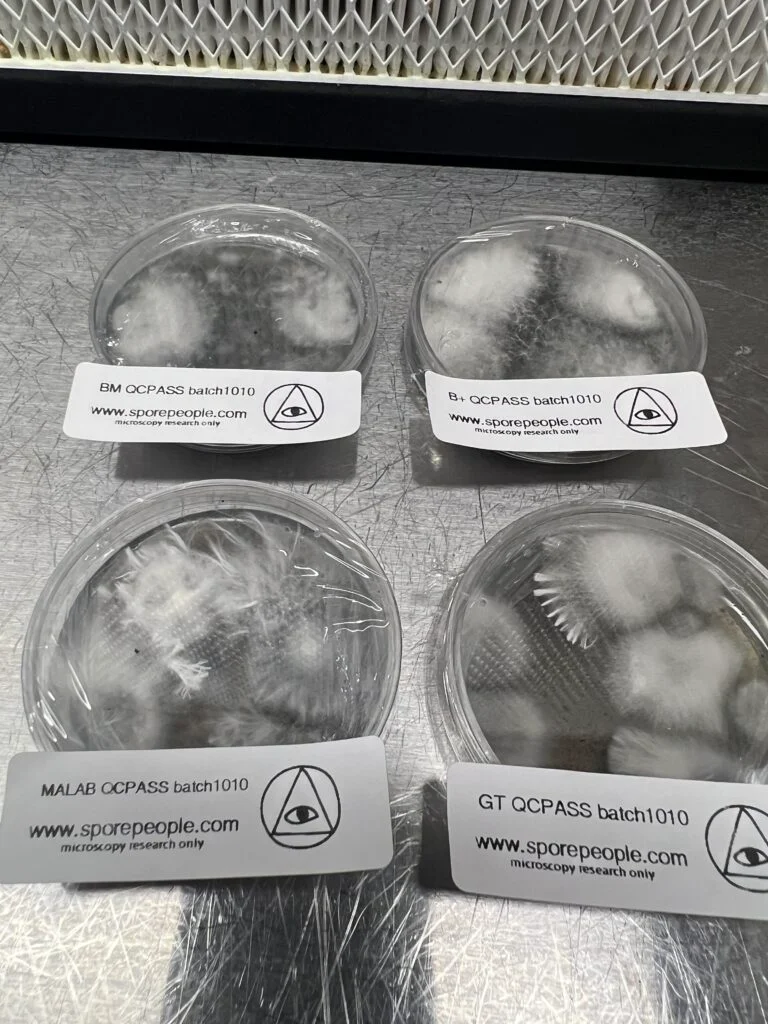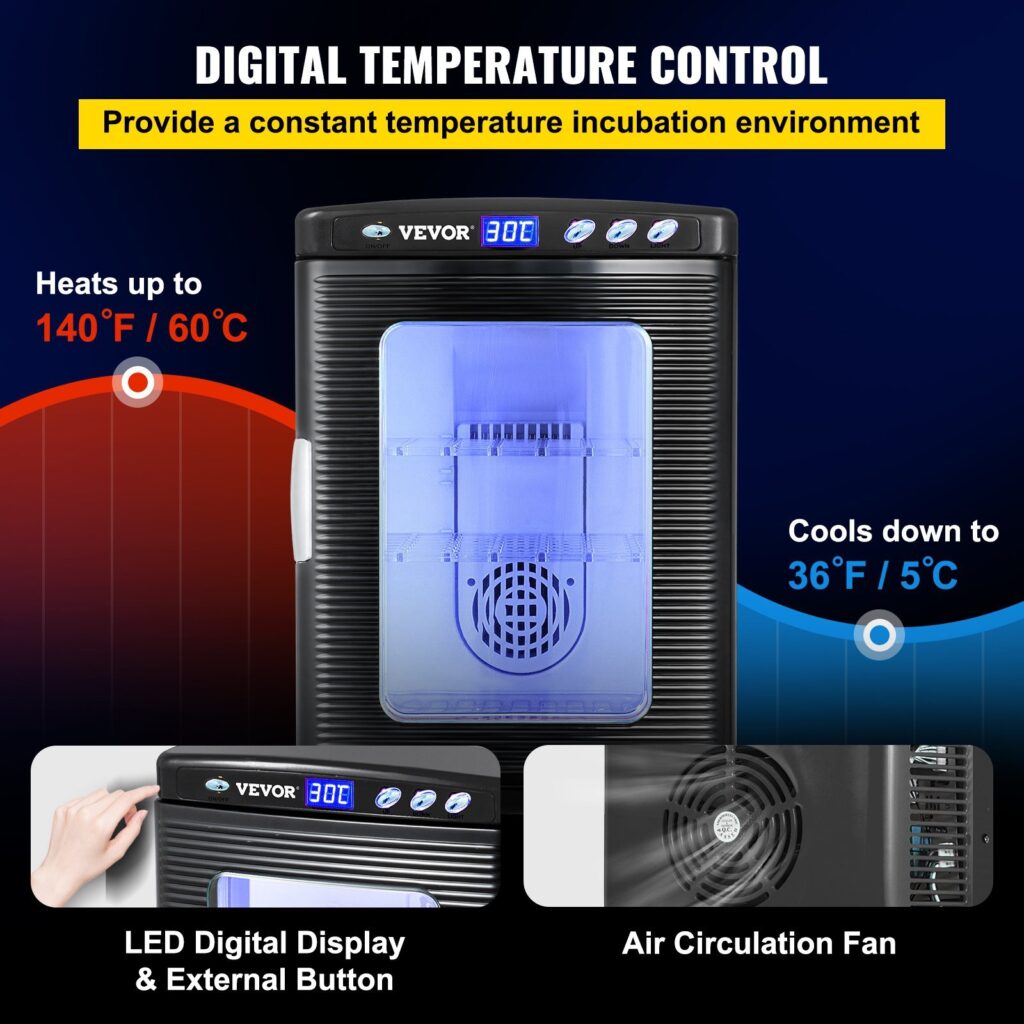Growing mushrooms successfully requires a deep understanding of two critical growth stages: incubation and fruiting conditions. Each phase has specific temperature, humidity, and fresh air exchange (FAE) requirements to ensure optimal colonization and fruiting.
This guide will walk you through everything you need to know about incubation, fruiting conditions, break & shake techniques, and essential equipment to maximize your mushroom yields.
Understanding the Two Primary Stages of Mushroom Growth
1. Incubation Stage
During this stage, mycelium colonizes the grain spawn or substrate. The goal is to provide:
- Warmer temperatures (75–80°F)
- Minimal fresh air exchange
- A sterile and controlled environment
Maintaining the right temperature and conditions ensures faster colonization and reduces contamination risks.
2. Fruiting Stage
Once the substrate is fully colonized, it’s time to initiate fruiting conditions by adjusting:
- Lower temperatures (72–75°F)
- Increased fresh air exchange (FAE)
- Higher humidity
- Indirect light exposure
These changes trigger mushroom pinning, leading to the formation of fruiting bodies.

Optimizing Incubation for Faster Mycelium Growth
The Ideal Incubation Temperature
For successful incubation, maintaining the correct temperature is crucial.
- Optimal range: 75–80°F (best at 78°F)
- Minimum temperature: 70°F (anything lower slows or stops growth)
- Maximum safe limit: 82°F (anything higher increases contamination risks)
Common Mistakes During Incubation
1. Using Direct Heat Sources
Avoid placing reptile heat pads directly under grain bags or agar plates, as they create uneven heating and can dry out the mycelium before colonization is complete. If using a heat pad, place it a few inches below the incubator to distribute warmth more evenly.
2. Not Using an Insulated Incubator
A digitally controlled incubator ensures a stable temperature throughout the colonization process.
3. Skipping Temperature Monitoring
Check temperatures regularly using a thermometer inside your incubation space to prevent overheating.
Break & Shake: When and Why It Matters
What is Break & Shake?
This technique helps distribute colonized mycelium throughout the grain bag, speeding up colonization while preventing contamination.
When Should You Break & Shake?
- First shake: When visible mycelium forms clumps in the grain bag.
- Second shake: When more than 50% of the grain is colonized to ensure even distribution.
Why is This Important?
If any grain remains uncolonized, it becomes a breeding ground for contaminants. Fully colonized grain is more resistant to mold and bacteria, reducing the chances of contamination.
Pro Tip: A digitally controlled incubator speeds up colonization by maintaining consistent temperatures.
How to Improve Spore Germination on Agar Plates
When working with spores on agar plates, temperature plays a major role in successful germination.
Best Practices for Agar Incubation
- Keep temperatures between 78–80°F for faster germination.
- Use 2–3 plates per spore transfer to increase your success rate.
- Avoid temperature fluctuations that can slow germination.
Common Mistake: Many beginners fail to incubate agar plates at the correct temperature or don’t prepare enough plates, reducing their chances of successful germination.

Essential Equipment for Mushroom Cultivation
Best Incubator for Growing Mushrooms
- 25-Liter Vevor Incubator
- Digital temperature control
- Holds 4 grain bags + agar plates
- Provides precise and stable incubation
Best Pressure Cooker for Sterilization
- Presto 23-Quart Pressure Cooker
- Reaches 15 PSI in ~10 minutes
- Faster sterilization compared to All-American canners
- More affordable and efficient for home growers
| Feature | Presto 23-Quart | All-American Canner |
|---|---|---|
| Time to reach 15 PSI | ~10 minutes | ~20–25 minutes |
| Material | Aluminum (faster heating) | Thick metal (slower heating) |
| Best for | Home growers | Commercial setups |
Why Use Presto? The Presto 23-Quart Pressure Cooker is faster than All-American Canners, which take twice as long to reach pressure unless used with an outdoor burner.
Transitioning from Incubation to Fruiting Conditions
Once the mycelium fully colonizes the substrate, it’s time to adjust the environment for fruiting.
How to Trigger Fruiting Conditions
- Lower the temperature slightly (72–75°F)
- Increase fresh air exchange (FAE) to stimulate pinning
- Provide indirect light exposure (not required for growth but helps trigger pinning)
Did You Know? Mushrooms are photosensitive, meaning light affects color and pin formation but not their ability to grow.
Fresh Air Exchange (FAE) and Its Role in Fruiting
Why FAE is Critical
- Ensures proper pinning and fruiting body development
- Prevents aborted pins (failed mushroom growth)
- Improves the overall yield of your harvest
FAE Requirements for Different Mushroom Strains
| Mushroom Strain | Fresh Air Exchange (FAE) Needs | Common Issues from Low FAE |
|---|---|---|
| Golden Teacher | Low to moderate | Can tolerate lower air exchange |
| Penis Envy | High | May form blobs/mutations with low FAE |
| Landrace Cubensis | Moderate | Slightly affected by low FAE |
How to Maintain Proper Fruiting Conditions
- Increase airflow while maintaining high humidity.
- Use an oscillating fan on a timer to regulate FAE.
- Monitor water droplets on the substrate to ensure proper moisture levels.
Common Mistake: Many new growers assume mushrooms require light to grow, but light mainly helps with pin formation and pigmentation.
Final Thoughts: Mastering Mushroom Growth from Incubation to Fruiting
- Incubation temperatures must remain between 75–80°F for optimal mycelium colonization.
- Break & Shake ensures full colonization and prevents contamination.
- Agar plates require precise incubation for successful spore germination.
- Fruiting conditions involve lowering temperatures slightly and introducing FAE.
- Lighting is optional but helps with pinning and color formation.
- Penis Envy and other specialized strains require higher fresh air exchange to prevent mutations.
By optimizing incubation and fruiting conditions, you’ll achieve stronger yields, reduced contamination risks, and faster colonization rates.
This step-by-step approach will help you master mushroom cultivation with confidence.


